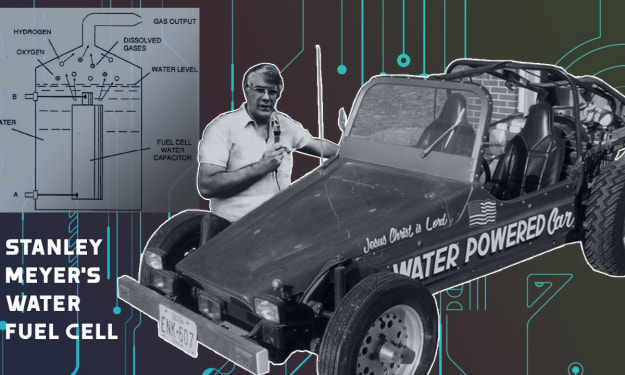The Beetle: Bug that sent Detroit into a spin
The Nazi statement that became a symbol of peace

On this day 17 years ago the unthinkable happened, Volkswagen stopped making the “original” version of the Beetle, the iconic vehicle dreamed up in 1931 by Ferdinand Porsche that became Adolf Hitler’s vision of the “people’s car”.
If ever a car oozed personality it was the Beetle, which first came off the production line in 1938, before the onset of World War II shut down manufacturing.
Known as the “Auto fur Jedermann” or “Car for Everyone”, the Beetle began its life as the Type 12 developed by Porsche, with motorcycle manufacturer Zundapp. The prototype came with a steel platform chassis and a “swing-axle” rear suspension, which gave the vehicle superb traction and steering, but it wasn’t until Hitler’s involvement that the first VW Beetle went into production.
Combining a unique design with reliability and bags of personality, the Volkswagen Beetle is still one of the world’s most iconic cars… with its original incarnation generating 21 million sales across its 65-year production run.
Today Germany is renowned for its automotive innovation, but in the aftermath of World War I the country was left playing catch up to Britain and the United States, so when Hitler came to power in 1933 he vowed to change that with his vision of the “Volks Wagen”, or “People’s Car”.
Hitler’s goal was to mass produce a small, cheap car that would rival the Ford Model A… and Porsche’s design, which was meant to carry two adults, two children, and their luggage, was the ideal fit.
But only 600 vehicles were produced at the Volkswagenwerk factory in Wolfsburg in 1938, mostly destined for Nazi leaders, and once World War II started the factory was used to make military vehicles instead.
In occupied Germany after the end of the war, the Allies followed the “Morgenthau plan” to remove all German war potential with car production set at a maximum of 10 per cent of 1936 levels.
The Americans handed over the Volkswagen factory to British control in 1945 with the intention of having it dismantled and shipped to Britain, but with no British car manufacturer interested in the factory it survived by producing cars for the Army instead.
Knowing Germany needed jobs and the Army needed vehicles, Major Ivan Hirst persuaded the British military to order 20,000 cars and by March 1946 the factory was producing 1,000 cars a month in Army khaki under the name Volkswagen Type 1.
After initially building Beetles for the British military, in 1947 production switched to civilian VWs featuring chrome bumpers, hubcaps, trim and running board for the first time.
Output reached almost 9,000 units in 1947, with total production increased to 19,244 vehicles in 1948, when models still had an under-stressed 1131 cc engine with 25 horsepower, although could effortlessly cruise at a top speed of 62 mph.
But initially the Beetle saw a poor reception from Allied nations with many, particularly Britain, seeing it as Hitler’s car, however despite this lukewarm reception it arrived in the United States in 1949.
Bucking the trend for the larger, more conventional vehicles typical in the US at the time, the Beetle’s compact size, efficient and reliable engineering, affordability and unique shape defied Detroit and proved a huge success with America’s younger consumers… although advertising also played a big part in winning the public over.
By transforming the car’s weaknesses into its biggest strengths, a brutally honest advertising campaign created wide appeal for it with slogans such as “ugly is only skin deep”, “live below your means” and “it makes your house look bigger”.
During the Cold War years in Germany that followed World War II, the Beetle’s success felt like a transformation, with Volkswagen general director Heinrich Nordhoff stating in 1958: “In 10 short years the Volkswagen has risen from total obscurity to become a household name on every continent. Because it does not pretend to be anything but what it is, an honest car.”
The Beetle had become a symbol of the federal republic’s superiority to National Socialism, proving the new Germany was better than the Nazis.
The Beetle ruled Germany’s roads in the 1950s and early ’60s, representing post-war normalcy to the German people. To Americans, the Beetle symbolised Germany’s recovery, but also came to represent idealism and peace, embraced by an American counterculture that rejected consumerism and conformity.
The Beetle could be seen everywhere… at the beach, at demonstrations, at music festivals, even in the suburbs. By 1968 it was the best-selling car in the world and in the 1970s it went on to become the first car to outsell Ford’s Model T in total production numbers.
And while the VW Beetle had conquered the roads of the world, that wasn’t enough for the quirky little car. Having made its silver screen debut in Alfred Hitchcock’s Vertigo in 1958, 10 years later at the height of its popularity it starred in The Love Bug, a Walt Disney comedy directed by Robert Stevenson.
The first in a series of films that featured a pearl-white, fabric-sunroofed 1963 Volkswagen racing Beetle named Herbie, The Love Bug followed the adventures of the Beetle, his driver Jim Douglas (Dean Jones), Jim's love interest Carole Bennett (Michele Lee) and Jim's enlightened, kind-hearted friend Tennessee Steinmetz (Buddy Hackett).
The Beetle’s other film roles include: Double Trouble (1967), Herbie Rides Again (1974), Herbie Goes to Monte Carlo (1977), Herbie Goes Bananas (1980), Happy Gilmore (1996), The Shining (1980), Footloose (1984), Big Lebowski (1998), Fight Club (1999), Skeleton Key (2005), Herbie: Fully Loaded (2005), and Bumblebee (2018).
But with Nordhoff’s death in 1968, a global recession, the collapse of fixed-exchange rates in 1978 and the 1973 oil crisis, the car’s popularity slowly declined in 1970s America, with US sales tailing off in 1979.
Production of the Beetle continued in Germany until 19 January 1978 when mainstream production shifted to Brazil and Mexico: markets where low operating costs were an important factor.
Beetle sedans were produced for US markets until July 1977 and for European markets until 1985, with companies continuing to import cars produced in Mexico after 1985.
As the original Beetle began to fade in Mexico, VW decided to introduce the “New Beetle” in 1997.
Though the New Beetle boasted different engineering, its essential silhouette remained the same and it helped kick off a wave of retro designs, with Volkswagen selling 1.2 million between 1998 and 2010, when a third-generation Beetle was introduced. Both the second and third generations were manufactured in Puebla, Mexico.
By 2002, more than 21 million Type 1s had been produced, but by the following year annual production had dropped to 30,000 from a peak of 1.3 million in 1971 and VW announced the end of production in June 2003.
So just six years after the New Beetle drove into the market, the last of the originals (No 21,529,464) rolled off the production line in Puebla on 30 July 2003.
The final batch of 3,000 were sold as 2004 models and badged as the Ultima Edicion, with whitewall tyres, a host of previously discontinued chrome trim, and the choice of two special paint colours... aquarius blue or harvest moon beige.
Each car included the 1.6 engine, a CD player with four speakers, a Wolfsburg emblem above the front trunk's handle, an all-cloth interior, chrome glove box badge, body-coloured wheels, tinted glass, a rear parcel shelf, and a VW Ultima Edicion plaque.
Serenaded by a mariachi band as it rolled off the line, the last model (nicknamed El Rey), was delivered to the company's museum in Wolfsburg, Germany.
Production of the New Beetle continued until 2010, with the third-generation supposed to pick up where the New Beetle left off.
To broaden its appeal, Volkswagen made the third-generation more modern, replacing the iconic rear-engine with a front-mounted version.
Although it never became a fashion icon like its predecessor the New Beetle, it still sold more than 500,000 units.
But in late 2018 Volkswagen announced the complete demise of the Beetle, with a special-edition model put into production to commemorate it. The last Beetle, a denim blue coupe, rolled off the line on 10 July last year and went on display at Volkswagen’s museum in Puebla.
The company has no plans for a replacement, instead production capacity at the Puebla factory switched to a new compact SUV tailored to the North American market.
But although the car that began life as a Nazi statement, before becoming a symbol of peace, has gone, VW isn’t finished with retro designs. In 2022, it plans to launch a production version of an all-electric homage to its other iconic vehicle… the Volkswagen Microbus.
The ID Buzz will be one of a range of new electric Volkswagens arriving over the next decade and, perhaps, it may some day find room in its lineup for an electric Beetle as well.
Landmark Beetle Events
17 February 1972: Sales of the Volkswagen Beetle exceed those of Ford Model T
19 January 1978: The last Volkswagen Beetle made in Germany leaves VW's plant in Emden
30 July 2003: The last 'original-style' Volkswagen Beetle rolls off the assembly line in Puebla
About the Creator
Steve Harrison
From Covid to the Ukraine and Gaza... nothing is as it seems in the world. Don't just accept the mainstream brainwashing, open your eyes to the bigger picture at the heart of these globalist agendas.
JOIN THE DOTS: http://wildaboutit.com






Comments
There are no comments for this story
Be the first to respond and start the conversation.